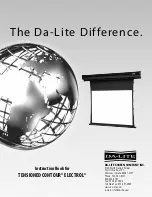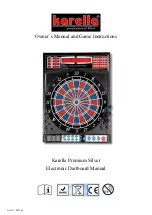
NOTE:
Read all instructions carefully before using the helmet; if
they are not followed correctly, the level of protection offered by
the helmet could be reduced. The manufacturer and/or distribu-
tor will accept no responsibility in the event of accidents leading
to injury or even death due to improper use of the helmet. This
helmet is constructed to absorb impact by partially
distributing the shock or by damaging its essential components.
This helmet it should be used exclusively for the activities for
which it is certified (see labelling). This helmet has been
approved for industrial use, altitude works and sanitary service
of emergency and aid, CE - EN 397 certified. The EC certifica-
tion procedure has been carried out by notified body n°. 0426,
Italcert Viale Sarca, 336 - 20126 Milano - Italia.
WARNING:
This helmet cannot always protect the user from
injury. Specifically, one should keep in mind that no helmet can
protect the head from the shock generated by violent impact.
Following violent impact, even if no damage is visible, the
helmet should be replaced, in that its capacity to absorb further
impact could be impaired. The helmet to which these instruc-
tions refer is a Category 2 Personal Protection Device, and has
been tested as such for EC certification as per article 10 of
European Council Directive 89/686/EEC, as amended by 93/95
EEC, 93/68 EEC, and 96/58 EEC.
SPECIFICATIONS:
Maximum force passed to the test head in
laboratory conditions: 5,0kN (EN 397).
INSTRUCTIONS:
As a protective measure, this helmet must be
worn at all times during activity. For adequate protection, it is
important that the helmet is sized correctly and fits the head
properly to offer optimum comfort and safety. The helmet
should be adjusted to fits the user; for example, the straps
should be positioned so that they do not cover the ears, the
buckle should be kept away from the jawbone, and the straps
and buckle should both be adjusted so that they are comforta-
ble and secure. After properly buckling and adjusting the strap,
always check that the helmet is not excessively tight; nor should
it move freely back and forth (see Fig. 1).
GB






































